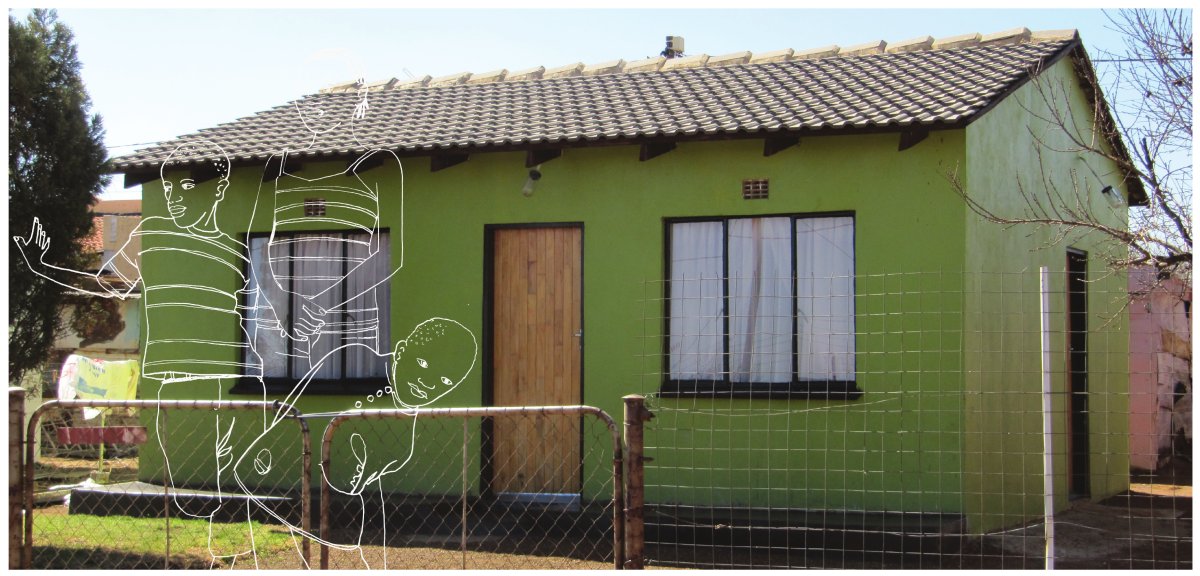You are here
Home Improvements
HOME IMPROVEMENTS
One Brick at a Time | Findings from the Visible Investment Survey
Finmark Trust
As soon as a subsidy beneficiary moves into their new house, thoughts turn to how to make it home. Cashbuild estimates that 60% of new units are upgraded within 18 months of the household moving in. In some cases, it’s a new window, or a fence; in others the entire house may be engulfed in a new structure. This building is incremental, step-by-step, financed with savings, microloans and sometimes even formal bank finance. In situ upgrading of the government subsidised house.
In 2010, the FinMark Trust, with support from Urban LandMark, the National Department of Human Settlements, the South African Cities Network, the Western Cape Department of Human Settlements and the FB Heron Foundation, undertook a study into the performance of government subsidised housing units. The study included a visual investment survey, in which the process and extent of home improvements was explored in three governmentsubsidised housing settlements: Slovoville, in Soweto, Gauteng; Emaplazini, in Inanda, KwaZulu Natal; and Thembalethu, in George, Western Cape. All of these settlements are more than ten years old.
- click images to see larger version -
The settlements
Slovoville (Soweto, Gauteng) was one of the first subsidy developments in Soweto and was built in the late 1990’s. It has approximately 1600 subsidy houses. Most beneficiaries came from Soweto and went through a long politically driven process of attending weekly meetings until they secured their subsidy houses. The area was officially opened by Mr Nelson Mandela.
Emaplazini (Inanda, Kwazulu Natal) is a subsidy development built in Inanda on a mountainous area. It has approximately 1000 houses. Beneficiaries squatted on farmland for many years and government bought the land from the farmers in the late 1990’s. A community organization was formed to negotiate a people’s housing process development. Interested community members participated in the organization by contributing 50 cents per day to a savings plan – over time, this led to their being able to build 4-bedroomed houses, which they paid for over a 5-year period. Those community members that did not participate in the community savings plan received subsidy houses.
Thembalethu (George, Western Cape) was developed in the late 1990’s, early 2000’s in a township close to George. It has approximately 5000 houses. The allocation of subsidy houses focused on informal settlement dwellers in Thembalethu. Other beneficiaries moved from the Eastern Cape and other rural areas in the Western Cape to try and find work in George or surrounding areas.
Findings
The majority of houses in the three settlements had been improved upon. More than 95% of houses in Slovoville and Thembalethu showed some form of investment. In Emaplazini, 77% showed some form of investment.
The majority of houses had a small investment in the form of plaster, paint, porch, burglar bars, shack or wire fence. The estimated value of this investment is less than the value of the original subsidy house. A significant number of houses had investments that looked as though they would have doubled, or more than doubled the value of the original subsidy house. The extent of this varied across the areas but it is most significant in Slovoville where over half (52%) had medium, big or very big investments. This is lower in Thembalethu (27%) and Emaplazini (28%). In all the areas there was some indication that investment is planned, with stockpiled building materials visible from the street.
The study found that investments seemed to be independent of the surrounding environment, and not as a result of state or private sector investment in the area. Respondents suggested that their motivation for making investments arose from the scarcity of other, more suitable housing. In the absence of a formal housing market catering for their specific needs, they needed to improve their housing incrementally. In some ways, therefore, home improvements are an informal response to housing supply constraints – households opt to extend or otherwise improve their housing because the market is not supplying any other form of affordable housing. In each of the neighbourhoods studied, and indeed across South Africa, the once uniform neighbourhoods of RDP housing side-by-side are now showing tremendous diversity in house type and form. A well-invested 4-bedroom house can be found in between two original subsidy houses that have been left untouched. Subsidy houses with no investment can be found on tarred roads, and subsidised houses transformed into mansions can be found on gravel roads. There is no format or pattern. There are no ‘wealthy streets’ and ‘poor streets’.
Continued on Panel 2
.
FINMARK TRUST
Powered by AA Media and The Architects Collective of South Africa
